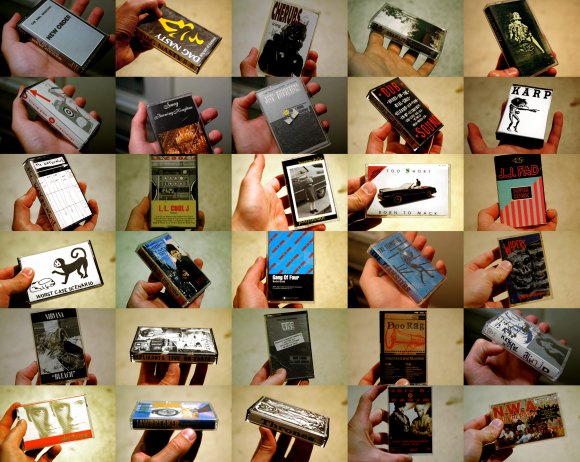
With the weakened world economy, content in general faces plenty of gloom and doom. Advertising models are severely weakened. But, oddly, in the world of music, there are some positive signs that the shift to decentralized, online distribution might actually be going well — and maybe economic pressures are simply ensuring the parties involved find some way to make the adjustment.
And music distribution is becoming wonderfully weird and diverse – maybe far more so than in recording’s so-called golden age, an era in the past dominated by racial division, predatory labels, and a few dominant big businesses. (Money is tough as always, but it does make you wonder why we complain so.)
One sign of the shifting landscape: online streaming site Pandora is now actually calling for more performance fees — for terrestrial (AM/FM) radio, anyway. Ars Technica has been doing a great job of following the issue:
Pandora now pushing radio to pay for music, too
It seems Pandora – along with other webcasters – was able to cut a deal on webcasting rates, in a battle that put music listeners and makers at the center of a legislative struggle. Legislators had been the ones to intervene and save webcasting, under pressure from listener constituents and even musicians. Pandora founder Tim Westergren told CDM how dire a failure on these rates could be.
What the deal means is that we can return to the rosier vision of how online streaming could help promote indie musicians, something Westergren put eloquently in a 2007 interview with CDM. But looking back at Tim’s arguments from two years ago, a central tenant was fairness — meaning big, corporate radio broadcasters really ought to face a level playing field and start paying musical rights owners. (Public radio in the US, by contrast, is likely to benefit from the online deal, as public stations increasingly rely upon wider online distribution and even pledges from loyal online listeners. Moved from Omaha to Montreal? You can still listen to your favorite station.)
There are signs that not only have online music pirates moved to download stores like iTunes, eMusic, and Amazon, but to streaming solutions, as well. In one of a number of recent studies, for instance, the UK is showing online file sharing down markedly as legal streaming grows. To me, the most interesting thing about this is that it disproves a long-held industry assumption that habits, once set, wouldn’t change. For better or worse, the online world doesn’t seem to work that way.
Meanwhile, the lines between “indie” and “major” are blurring quickly. Again, Ars Technica:
Universal/TuneCore deal opens major doors for indie artists
The surprise there is that it’s not so much about distributing Universal artists exclusively – online artist services firm TuneCore is now opening its membership base to Universal and visa versa, so that Universal can discover new artists and artists get licensing and mastering services from UMG without the need for exclusive contracts with the major label. In fact, if there’s one word that sums up the future of music deals, “non-exclusivity” seems to be it.
(clarification) As kj notes in comments, I think saying this opens “major doors” is a bit of a stretch. It opens a small door at a major. But on the other hand, the idea of a label becoming an open service shop for artists – for offering, say, mastering for a fee as part of their revenue – is new and, provided it actually works, interesting. And it’s clearly part of a larger trend.
![]()
But I think the best news is the spread of unusual means of musical distribution. Eliot Van Buskirk writes a round-up of favorites for Wired Magazine. (And yes, while top ten lists are overused, they’re brilliantly appropriate when you actually have ten really awesome things.)
10 Weird Ways to Distribute Music
From soup cans to music boxes to iPhone apps, there are a few underlying trends in there. One is experimentation in the delivery mechanism itself (including 8-tracks and cassettes, really). The other is in what you can do with the media, as with the interactive remixable iTunes album, or even art books that extend what an album actually is.
As these spread, though, I have to optimistically think that this is more than desperation or brief novelty. Distribution media haven’t just shifted from one popular form to another; they’ve imploded. We’re rapidly approaching a “minority majority” situation in which no one format dominates the others. We haven’t gone from the compact cassette to the CD to the MP3. We’ve gone from the CD to MP3s, MP4s, lossless files for aficionados and lossy streams for kids who love on-demand, vintage formats, physical media and art books and software. Instead of being strange anomalies, these other formats may actually be the new normal. I think in a way the business model doesn’t matter, because, let’s face it, a lot of art making is about losing money. What drives artists is loving sharing the thing they’re making, and finding someone who wants to love it, too. Some people will make a great business model around that, while others won’t.
But if you’re a music lover, we could be facing a new golden age. And if you missed compact cassettes, good news – they’re back.
